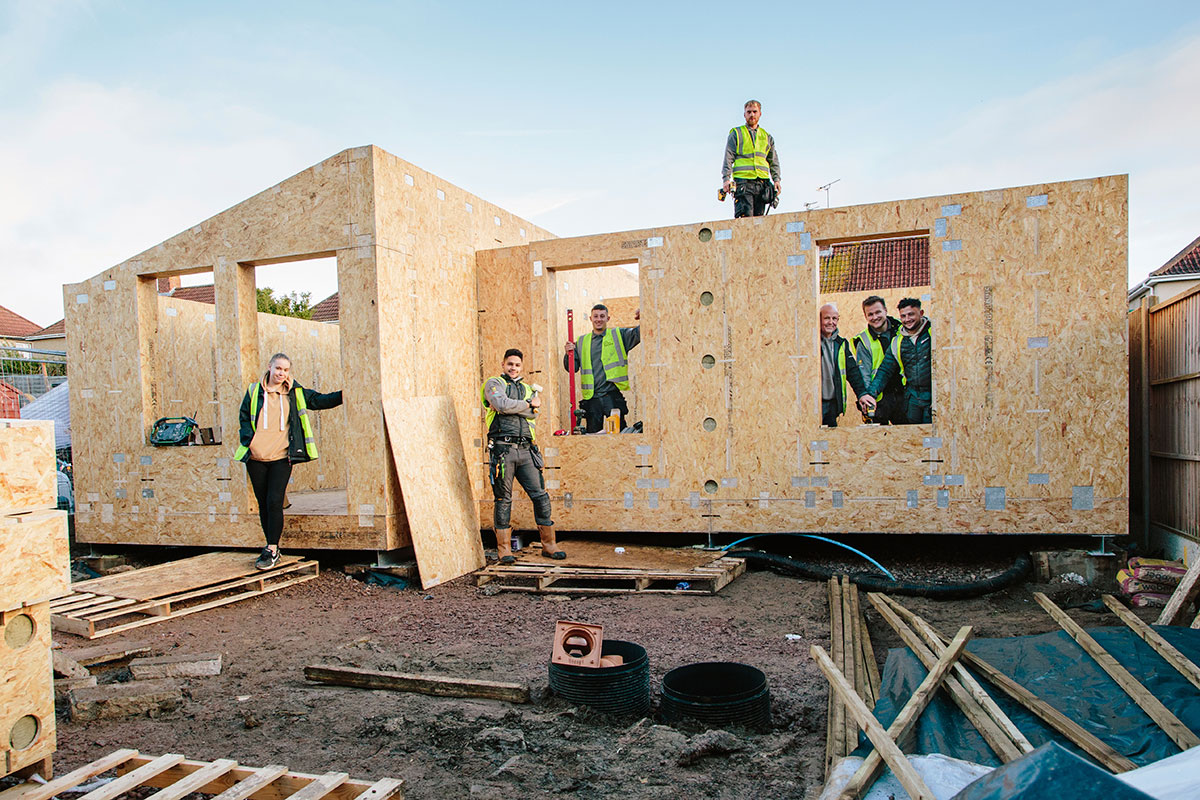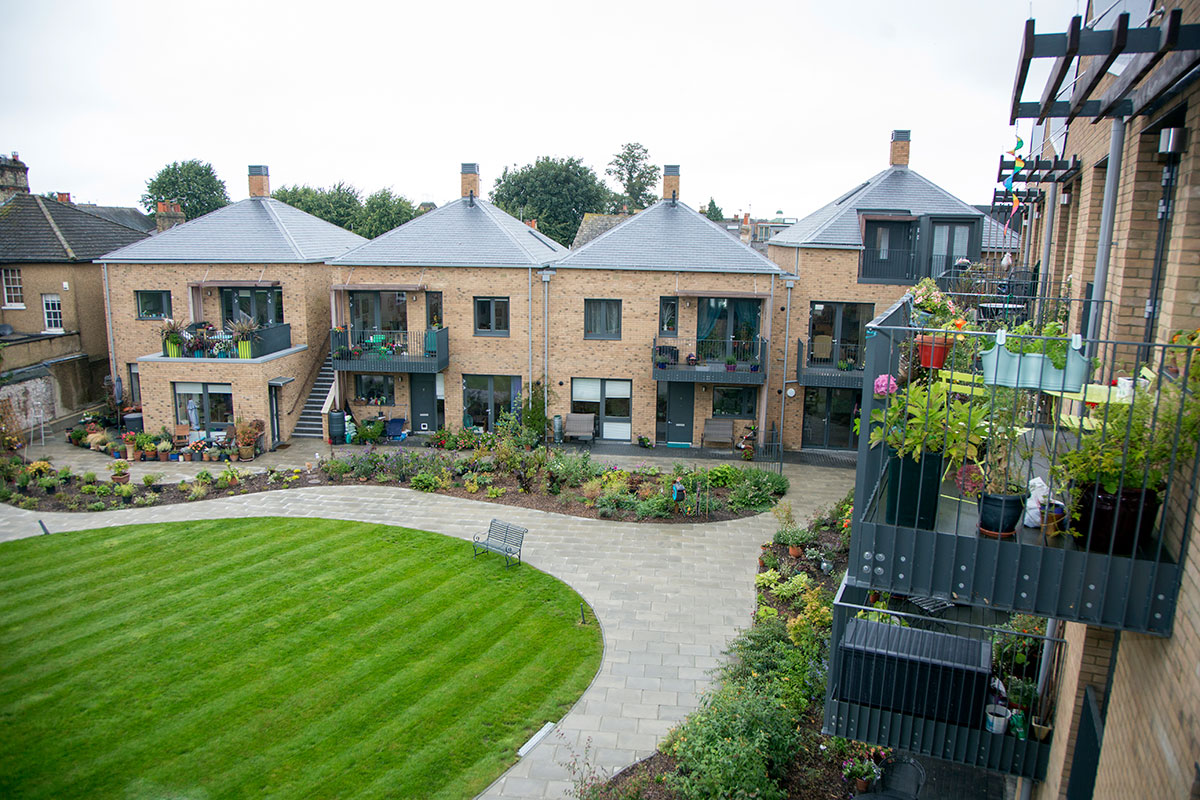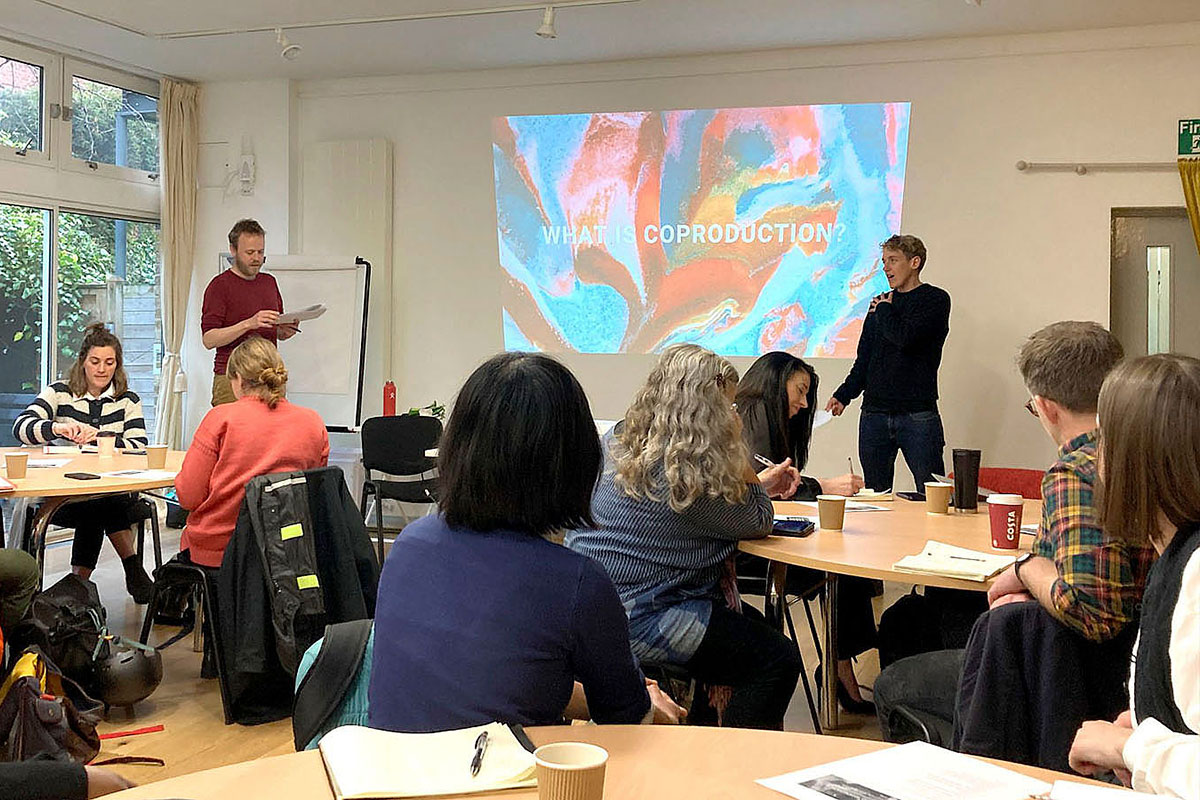You are viewing 1 of your 1 free articles
The case for co-production
Co-production is a concept gaining popularity in the housing sector – but is it leading to meaningful change from traditional tenant engagement methods? Ella Jessel attends a workshop to find out the benefits and pitfalls
“You’re not a team.”
“You will not agree.”
“One partner will always have more power.”
These “provocations” were among five handed out to participants at the start of a recent workshop on housing co-production. As a starting point, they might feel confrontational for a social landlord that hopes to make use of co-production methods to work with residents to develop new homes. But for workshop facilitators Sib Trigg and Rowan Mackay, from Community Led Housing (CLH) London, it is better to take the “rose-tinted glasses” off right away.
The term co-production originated in social care in the 1970s, before crossing into other sectors. It is generally understood to mean professionals and citizens sharing power to plan and deliver services together.
Co-production has been used as a model in small-scale community-led housing development projects, such as Older Women’s Co-Housing in Barnet, or We Can Make in Bristol. But now, with the need to re-establish trust among tenants, more social landlords are taking an interest in what it has to offer.
If it can become part of mainstream housing delivery, co-production could be a way to “realise more equitable housing development”, according to CLH London. But with much confusion surrounding what co-production means in practice, it risks becoming yet another housing policy buzzword.
To provide clarity and help housing providers considering a co-production approach, CLH London brought together resident groups and social landlords in Old Street, London. The workshop was a chance to learn from CLH London’s co-production work.
Rising interest
In London in particular, the rising interest in co-production can be seen as part of a broader shift in the politics of housing and a move away from the idea that estate regeneration requires wholesale demolition. “There is an acute demand for a better relationship between tenants and landlords,” says Mr Mackay. He adds: “[On regeneration projects] there has been a learning process and some councils are now doing it in a less violent way. Co-production could have been called anything. What people are wanting to talk about is power and trust.”
According to Mr Mackay, co-production can be a good vehicle for shifting power dynamics and, if done well, it can allow communities to negotiate control over the delivery of homes or housing services. As for social landlords, co-production has the potential to improve the efficiency and quality of service delivery, and strengthen relationships with residents. On a basic level, it involves setting up a steering group made up of officers from an organisation, and residents or other community representatives.
Unlike traditional engagement, where residents’ views on a set of proposals are elicited, in a co-design process, they acquire some actual decision-making power.
Although many in the housing sector would claim that the resident engagement they are already doing is co-production, the workshop paints a different picture. A framework on co-production produced by CLH London explains: “The members… advise or make decisions over the lifetime of the project, beyond punctuated moments of ‘inclusion’ usually afforded within conventional processes.”
Among those attending the CLH London workshop were some social landlords already trialling co-production approaches in service design.
Accept ‘messy’ processes
Southern Housing Group, which since merging with Optivo last year manages 77,000 homes across the South and South West, has drawn up a ‘co-creation’ framework. This approach has since informed its recent environmental, social and governance (ESG) report and Building Safety Resident Engagement Strategy.
“It allows us to design services around the needs of our residents,” says co-creation and innovation manager Lewis Kinch. “There’s definitely been a shift in people’s understanding of what co-production is and why it’s beneficial.”
Mr Kinch says one of the reasons Southern’s co-creation strategy has been successful is that the organisation brought in specially trained staff to work on it. Residents involved in the process were also compensated for their time with vouchers, he adds.
While co-production can deliver huge benefits, it requires resources and commitment. “There’s a tendency for a rose-tinted glasses approach,” says Mx Trigg, “where people think they are going to collaborate and have great problem-solving conversations and walk off into the sunset”.
In reality, there are a host of pitfalls. Many arise from the central concept of ‘power-sharing’ – for example, individuals might represent a large organisation but have limited power themselves, while there are often power dynamics within community groups or tenant and resident associations that need careful navigating.
For co-production to be genuine, it needs to go beyond ‘consultation’. After years of reliance on such engagement frameworks, habits can be hard to break. A co-production guide drawn up by CLH London explains that successful co-design requires an acceptance of “non-linear, messy processes”.
“There’s a tendency for a rose-tinted glasses approach, where people think they are going to collaborate and have great problem-solving conversations and walk off into the sunset”
The guide also says that for a better chance at success, constraints and red lines must be communicated from the start to avoid setting expectations too high. Another key issue is information-sharing.
One participant said it seemed some organisations would require a “culture shift” from the top before embarking on a co-production approach, while another pointed out that this was unlikely to happen without a “live project” to show how it could be possible.
Many organisations will learn by doing. Southern has not yet tried a co-production approach on a regeneration project or development, Mr Kinch says, and the development side of the organisation is probably “less familiar” with the concept than the housing team.
Prior to the merger, homes at Optivo were usually delivered through Section 106 agreements at the planning stage. But now the landlords have joined, there is a hope they can take greater control over the development process, Mr Kinch explains.
Sovereign co-produced its Homes and Place Standard – which sets minimum standards for both new build and existing homes – with residents. Technical director Richard Young says that the association was already heavily involving the community on new projects, but that co-production would take that “a few steps further”. At present, he says it is too much of a “new concept” to roll out on live development schemes, especially given the current complexity of housing delivery.
It could still work well on regeneration schemes as a way of bringing an estate’s existing residents into the process, Mr Young says. But there is no one-size-fits-all fix. “I’d struggle to say this is something we could roll out carte blanche across all schemes; it needs to be [on] a site-by-site basis.”
“We became tired of sitting around waiting for the government to do something. We wanted to build homes for ourselves – something better than the social housing that we see in Croydon”
But in some areas of the UK, the theory is being put into practice. CLH London worked with People’s Empowerment Alliance for Custom House in Newham to facilitate a co-production process that is ongoing, although the regeneration remains controversial. Local authorities in London have also experimented with co-design approaches, including Southwark on the Tustin Estate and Barnet on the Fosters Estate.
Meanwhile in Knowle West, Bristol, residents were involved in designing and building two community-led homes built by We Can Make in the back gardens of an existing low rise.
One housing association taking the plunge is 1,500-home Croydon Churches Housing Association. The provider is working on its first co-produced scheme with a housing co-op formed by a group of local single mothers called Heads2Gether (H2G). Most currently live in temporary or emergency accommodation.
H2G was formed around five years ago, when a group of local women began exploring community-led housing, explains committee member Stella Osan. “We became tired of sitting around waiting for the government to do something. We wanted to build homes for ourselves – something better than the social housing that we see in Croydon,” Ms Osan says.
For some housing providers, the idea of shifting power to residents on high-risk development projects or estate regeneration might still feel too radical. As those helping to forge new housing partnerships remind us, the key is to not be afraid of failure. Mx Trigg says: “The only way to do co-production is to do it.”
Sign up for our tenancy management newsletter
Already have an account? Click here to manage your newsletters














